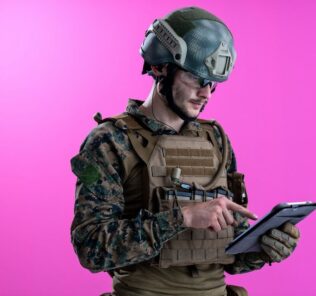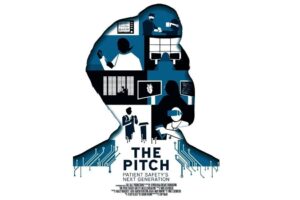The Best Ways to Reopen a Simulation Center During COVID-19
Healthcare Simulation plays a significant role in the education and ongoing training of healthcare professionals — and should NOT be shut down just because of the COVID-19 pandemic. If anything, specialized training for proper PPE compliance and intubation techniques should be practiced more regularly, argues HealthySimulation.com writing contributor Dr. Kim Baily PhD, MSN, RN, CNE, previous Simulation Coordinator for Los Angeles Harbor College and Director of Nursing for El Camino College. Here, Dr. Baily reviews some key new research to provide us some important tips for reopening clinical simulation programs and sim labs during the global pandemic.
The COVID-19 pandemic has led to the complete or partial closure of many healthcare simulation labs. A few medical simulation labs however, have continued to operate during the pandemic and many are considering reopening. Cedars-Sinai Simulation Center felt the continued operation of their simulation center was important for continuing healthcare professional education and on-going training.
A recent article by Ingrassia et al. (2020) entitled “COVID-19 crisis, safe reopening of simulation centres and the new normal: food for thought” in Advances in Simulation 5:13, suggested some great tips for reopening a healthcare simulation lab. The authors thought it important to consider the role of their learners and whether it likely they might have been exposed to COVID during their normal work day. They also suggested that human factors training such as teamwork and communication might be challenging at present since maintaining physical distance in a simulation lab would be difficult. Tips from this article, the Cedars-Sinai Simulation Lab policy and others articles are reviewed below:
Sponsored Content:
Best Practice Tips for Reopening Sim Labs During COVID-19
Establish a COVID-19 Task Force
- Risk assessment should include consideration of both operational and business risk. Representatives from simulation management, human resources, faculty, information technology and administration should be included.
- Where available, infection control practitioners should also be included.
- Ongoing monitoring of results should be completed and simulation lab operations be changed if needed.
- Ensure adequate funds to pay staff for cleaning, cleaning supplies and signage.
Use of Simulation Spaces
- Healthcare simulation centers have not been designed with social distancing in mind although this may change in the future.
- Air recirculation systems should be eliminated and adequate air exchange via natural or forced mechanisms implemented if possible.
- Points of entry and exit should be different.
- Establish one way routes.
- Create barriers to direct movement and prevent entry into specific areas.
- Limit the number of people in elevators.
- Consider the addition of portable solutions e.g., portable HEPA filtration units to augment air quality in confined areas.
- Limit stay in one area unless physical distancing can be maintained and there is adequate air exchange. Masks should be worn where appropriate e.g. restrooms.
- Post number of people allowed in each room.
- Add signage and footprint floor markers.
- Devise strategies to limit congregation e.g. provide packed lunches or ask participants to bring their own lunch. Provide outside eating areas.
- For consideration: Cedars Sinai Simulation Lab requires groups of 25 or more students who will arrive as one group or spend any time in one room as a full group to be divided into two groups. If space is available, two groups can be run simultaneously otherwise, an alternative date has to be requested.
Follow National Guidelines for COVID-19
Sponsored Content:
- Post guidelines (see below for more information).
- Admittance refused if fever > 37.5”C or if flu-like symptoms including cough are present.
- Learners who develop symptoms during lab activities should be excused and referred to a healthcare practitioner.
- Follow up to determine COVID status.
- Create a health assessment to be completed by the individual prior to arrival at the simulation center or at the entrance to the facility. And onsite assessment should be completed by trained staff wearing PPE.
- Have learners and staff complete health declarations.
- Show evidence of full recovery if previously infected.
- Hand sanitation before entering.
- Comply with standards related to hand washing, distancing, mask-wearing and PPE.
- Keep record of participants and date attended. This may be used for contact tracing.
- Bags and clothing should be stored in specified areas that can be sanitized later.
- Limit unnecessary visitors to the center.
Personal Hygiene and PPE
- Complete hand washing with soap and water or, if water not available, alcohol based sanitizers.
- Obviously, remember to require masks at all times.
- PPE when physical distancing is not possible.
- Tie back long hair.
- Learners should wear gloves when touching manikins and equipment.
- Following removal of gloves, hands should be washed.
- Cover keyboards and other sensitive electronic equipment with plastic to prevent contamination
- N95 masks are designed to remove 95% of particles that are at least 0.3 microns (µm) in diameter. However, they have been shown to filter about 99.8% of particles with a diameter around 0.1 µm. N95 should be fitted to the person wearing them and are not a good fit for all face shapes or those with facial hair.
- Physical Distancing (at least 6 feet).
- Repeat sessions with fewer numbers of learners.
- Stagger arrivals and departures.
- Move tables and chairs or mark chairs so that social distancing is maintained.
- Tables at least 6 feet apart, seating checkerboard fashion.
- Avoid face to face seating.
- Consider reconfiguring skills labs to limit exposure.
Management of Simulation Staff
- Stagger arrival and ensure social distancing.
- Protect reception staff with screens when possible
- Flexible work hours/online meetings if possible.
- Track ill staff.
Cleaning and Sanitation
- Cleaning is the physical washing away of contaminants using soap and water.
- Disinfecting is the use of chemicals to kill germs remaining on a surface.
- Surfaces should always be cleaned before disinfecting.
- Hourly Cleaning Schedule:
- Identify frequently touched surfaces e.g. tables, armrests, doorknobs, light switches, handles, desks, toilets, faucets, sinks and electronics.
- Lab equipment such as monitor surfaces, keyboards, laryngoscopes, medical devices, tools, handles, taps, sinks, cell phones.
- Elevator buttons, vending machines, personal work tools.
- Disinfect between groups.
- Provide hand sanitation stations.
- Clean equipment (staff should wear appropriate PPE).
- WHO guidelines recommend microfiber cloths with detergent and water to reduce microorganism.
- Inactivation of COVID-19 Requires:
- Sodium hypochlorite (0.1-0.5%) – 10 min contact.
- Ethanol (62-71%) – 10 min contact.
- 2-Propanol – 30 seconds
- Beach – 0.21% 30 seconds.
- Clothing and Fabrics. Do not shake and wash in the hottest setting possible. Use disposable bags or washable hamper liners.
- Manikins – clean using manufacturers recommendations (most use detergent and water for basic cleaning) followed by alcohol or sodium hypochlorite solution.
- Laerdal and CAE recommend disinfecting with 70% isopropyl alcohol.
- CPR mannequin faces can be disinfected with a sodium hypochlorite solution (⅓ cup of bleach (1000 ppm minimum) per gallon of water). Contact time – 1 minute on the surface.
- Ultraviolet Germicidal Irradiation (UVGI) is a disinfection method that uses UVC radiation to inactivate microorganisms by causing DNA damage and preventing replication. Previous studies have shown that UVC can inactivate coronaviruses, including severe acute respiratory syndrome coronavirus (SARS-CoV). UVGI offers another method to reduce virus levels. Exposure time and distance from the device to contaminated surface must be calculated. UV changes the structure of genetic material and prevents replication of germs
- Shading and shadowing can prevent UV light from effectively disinfecting surfaces.
- UV can burn your eyes and skin causing lasting damage.
- Maintain any storage rooms as clean spaces.
- Instructors should notify simulation staff when a lab is completed so that cleaning can be completed immediately.
Test New Set-ups Prior to Use
- Reassess outcomes such as infection rates and make changes as necessary.
- Ensure adequate cleaning materials, staffing and PPEs.
- Asses whether changes due to COVID-19 policies could impact existing safety procedures.
Additional Government Resources
The EPA has created a list of agents known to kill SARS-CoV-2 (List N: Disinfectants for Use Against SARS-CoV-2 (COVID-19). The EPA does not investigate devices but notes the following: The claim “Kills SARS-CoV-2” may be true and not misleading where a device has been tested against the coronavirus SARS-CoV-2. “SARS-CoV-2” refers to a virus. “COVID-19” refers to a disease and diseases cannot be “killed.” Therefore, the claim “Kills COVID-19” is always considered false and misleading.
Some restaurants and other places of business have begun using misters and foggers however, currently the EPA fogger guideline states: “Unless the pesticide product label specifically includes disinfection directions for fogging, fumigation, or wide-area or electrostatic spraying, EPA does not recommend using these methods to apply disinfectants. EPA has not evaluated the product’s safety and efficacy for methods not addressed on the label”.
Note: If you are considering using foggers/misters, confer with your fire/safety services to consider how these materials could spread through vents and if these materials could trigger fire alarms.
Review the CDC Resources
- Interim Infection Prevention and Control Recommendations for Healthcare Personnel During the Coronavirus Disease 2019 (COVID-19) Pandemic. This document has extensive information about cleaning in the hospital setting.
- Reopening Guidance for Cleaning and Disinfecting Public Spaces, Workplaces, Businesses, Schools, and Homes.
Reopening a healthcare simulation lab takes extensive planning to keep staff and learners safe. Frequent reviews of operations and any COVID-19 outbreaks should be completed. If staff and learners remain SARS-CoV-2 free, operations can continue if however, an outbreak occurs, operations will need to change or the lab temporarily closed.
For more COVID-19 resources, please be sure to also read / share this and our previous Coronavirus Simulation articles:
- Comprehensive COVID-19 Medical Simulation Resource List (this page)
- Latest Medical Simulation Research Focused on COVID-19
- CARES Act Provides Immediate Funding Opportunities for Healthcare Simulation
- New COVID-19 Simulation Scenarios From EM SIM CASES
- CNN Covers Healthcare Simulation Advances From COVID-19
- How One University Pivoted Their Standardized Patient Program to Online Learning During COVID-19
- Even More Helpful COVID19 Healthcare Simulation Resources
- COVID-19 Causes National Emergency in Healthcare Education
- Additional Responses to the Coronavirus from the Medical Simulation Industry
- Healthcare Simulation Industry Responds to Coronavirus COVID-19
- Coronavirus Simulation Resources: Scenarios, Online Training, Procedures Guide
- HHS Whistleblower Complaint Demonstrates Immediate Need for Medical Simulation Coronavirus Training
- Suspected COVID-19 Simulation Scenario from CAE Healthcare, New WHO Resources & More
And Check Out of Healthcare Simulation COVID-19 Resources Page For More Great Tips
Dr. Kim Baily, MSN, PhD, RN, CNE has had a passion for healthcare simulation since she pulled her first sim man out of the closet and into the light in 2002. She has been a full-time educator and director of nursing and was responsible for building and implementing two nursing simulation programs at El Camino College and Pasadena City College in Southern California. Dr. Baily is a member of both INACSL and SSH. She serves as a consultant for emerging clinical simulation programs and has previously chaired Southern California Simulation Collaborative, which supports healthcare professionals working in healthcare simulation in both hospitals and academic institutions throughout Southern California. Dr. Baily has taught a variety of nursing and medical simulation-related courses in a variety of forums, such as on-site simulation in healthcare debriefing workshops and online courses. Since retiring from full time teaching, she has written over 100 healthcare simulation educational articles for HealthySimulation.com while traveling around the country via her RV out of California.
Sponsored Content:


















